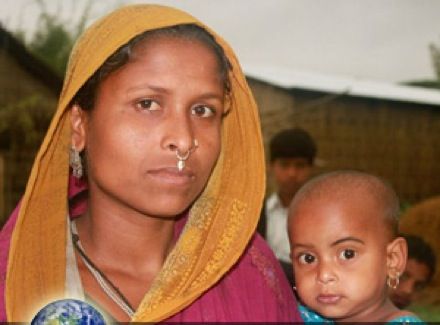In July 2010, the Pulitzer Center again partnered with Helium to produce the ninth round of the Global Issues/Citizen Voices writing contest. Contestents were challenged with the following prompt:
Hundreds of thousands of women die each year due to complications related to pregnancy and childbirth. What are the first steps to making a difference?
Winning essay by: Alexandra Fielden
"No woman should die giving life." – UNFPA Executive Director Thoraya Ahmed Obaid.
Numerous interventions are underway this very minute to reduce the maternal mortality ratio in hundreds of countries worldwide. To make a real difference requires a larger and more robust evidence base for these policies, however.
Rigorous impact evaluations, and commensurate policy analysis and amendment, is a critical first step in eliminating the hundreds of thousands of unnecessary deaths that occur each year as a result of complications related to pregnancy and childbirth.
In order to achieve Millennium Development Goal 5 (MDG5), which calls for a reduction in the maternal mortality ratio by three-quarters between 1990 and 2015, we need to know what works, why, where, and how.
A number of countries have already achieved MDG5, or will meet the target ahead of schedule. My experience working on women's reproductive health in the Maldives has afforded me the opportunity to learn from the dramatic achievements of the last several years in this archipelago. The maternal mortality rate stood at approximately 500 per 100,000 live births in 1990, but the Maldives met MDG5 in 2007 and the maternal mortality rate now stands at an impressive 57. Substantial investment in health care and policies framing health as imperative to the country's development are among the many factors that have contributed to this success.
Although it is often quoted that a woman's risk of dying during delivery is 250 times higher in low-income than in developed countries, it is fanciful and/or sophomoric to think that one single programme has the capacity make a substantial difference in all developing contexts. Regions, countries, and localities vary greatly - we cannot expect that one size will fit all.
Despite these complexities, the first step should be an increased focus on gathering and analyzing data, information, and best practices. Countries need to be able to track their own progress on MDG5, as well as monitor and evaluate system efficiencies, and to identify successes, failures and gaps.
To be sure, data is scarce and difficult to collect because of the sensitive nature of the issue and the obstacles created by remote or dangerous environments. For this reason, maternal mortality is usually tracked through modeling projections of demographic data rather than direct country reporting. Other indicators can be used in place of maternal mortality ratios where necessary. Examples include: the percentage of deliveries attended by skilled health personnel; ante-natal visit coverage; and maternal death audits.
Data and other information about successful governmental, non-governmental or societal interventions may provide the best guidance for the way forward between now and 2015. Context will dictate the best strategy for intervention, be it to focus on reproductive health, family planning, access to information, availability and quality of medical care, or a combination of such approaches.
What is clear is that progress has been made on MDG5. Now is the time to learn from it.
